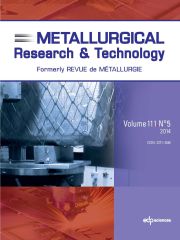Article contents
A long term study on biofilm development in drinking waterdistribution system: comparison of stainless steel grades with commonly usedmaterials
Published online by Cambridge University Press: 01 December 2011
Abstract
For microorganisms, the preferred living state is adhering to surfaces that can lead tothe development of a biofilm. In drinking water networks, a biofilm can affect theorganoleptic quality of the water as well as whether it is safe to drink. This is due tothe probable presence of pathogens inside the biofilm which may be spread in the water. Tokeep the water quality safe, sanitization processes are regularly carried out usingoxidizing biocides which can alter the physico-chemical properties of the material. Due totheir surface physico-chemical properties and their high corrosion resistance, stainlesssteels seem to be good candidates for the making of drinking water systems. In this 2 yearstudy, stainless steel grades were compared with materials commonly used, in respect offouling, biofilm development and composition. The tested stainless steels include ferritic(444/EN 1.4521), three austenitic (304L/EN 1.4307, 316L/EN 1.4404, and 316LN/EN 1.4429)and two duplex (2304 /EN 1.4362, and 2205/EN 1.4462) grades. The experiments wereperformed in a pilot specially designed to assess the material biocontamination on anatural drinking water loop for more than 2 years. The results confirmed the significantimpact of the material on the biofilm development in terms of formation kinetic andecology. No differences were observed between stainless steel grades whereas theydisplayed an intermediate behaviour compared to other materials. Corrosion attacks wereonly observed on galvanised carbon steel while on stainless steels, negligible releaserates, much below international health requirements were measured. So stainless steelsoffer a good compromise to make drinking water pipes.
Keywords
- Type
- Research Article
- Information
- Copyright
- © EDP Sciences, 2011
References
- 13
- Cited by


